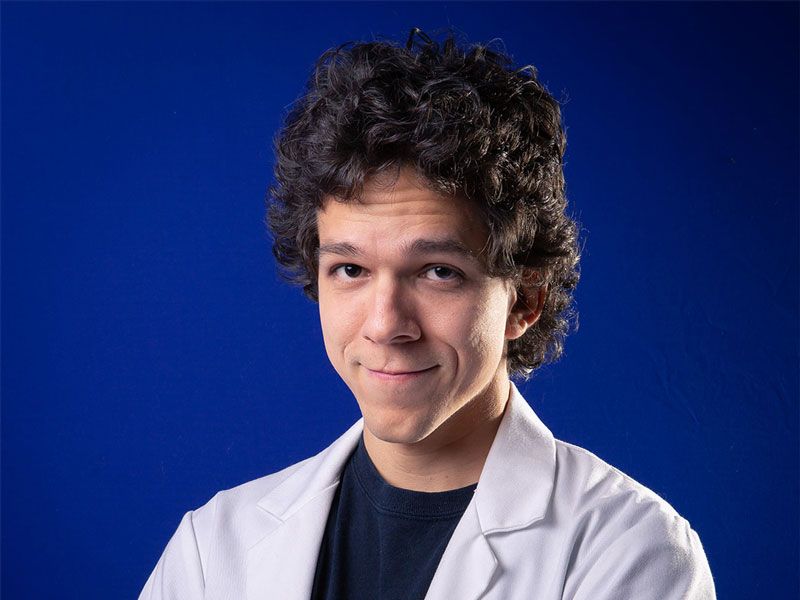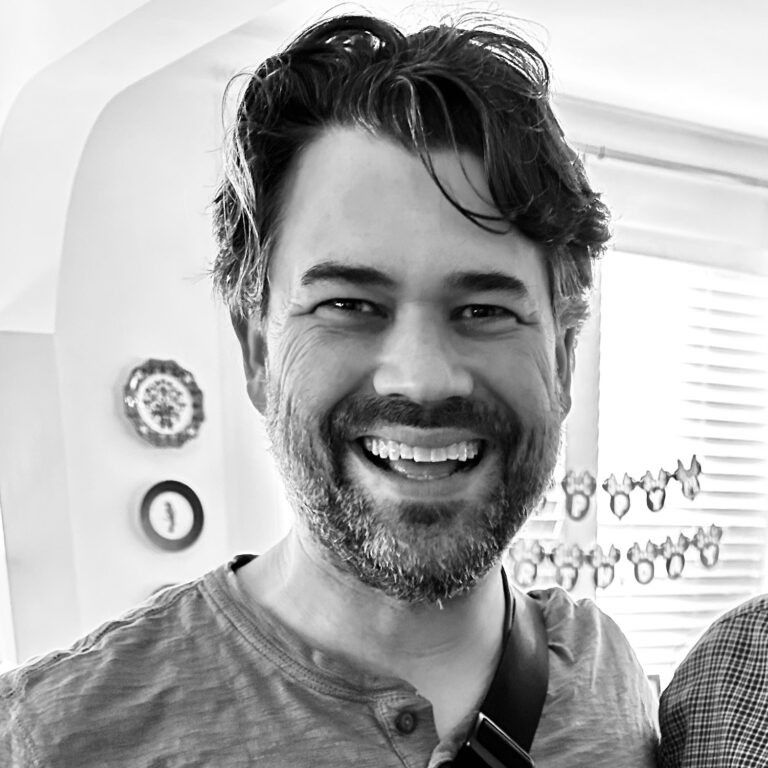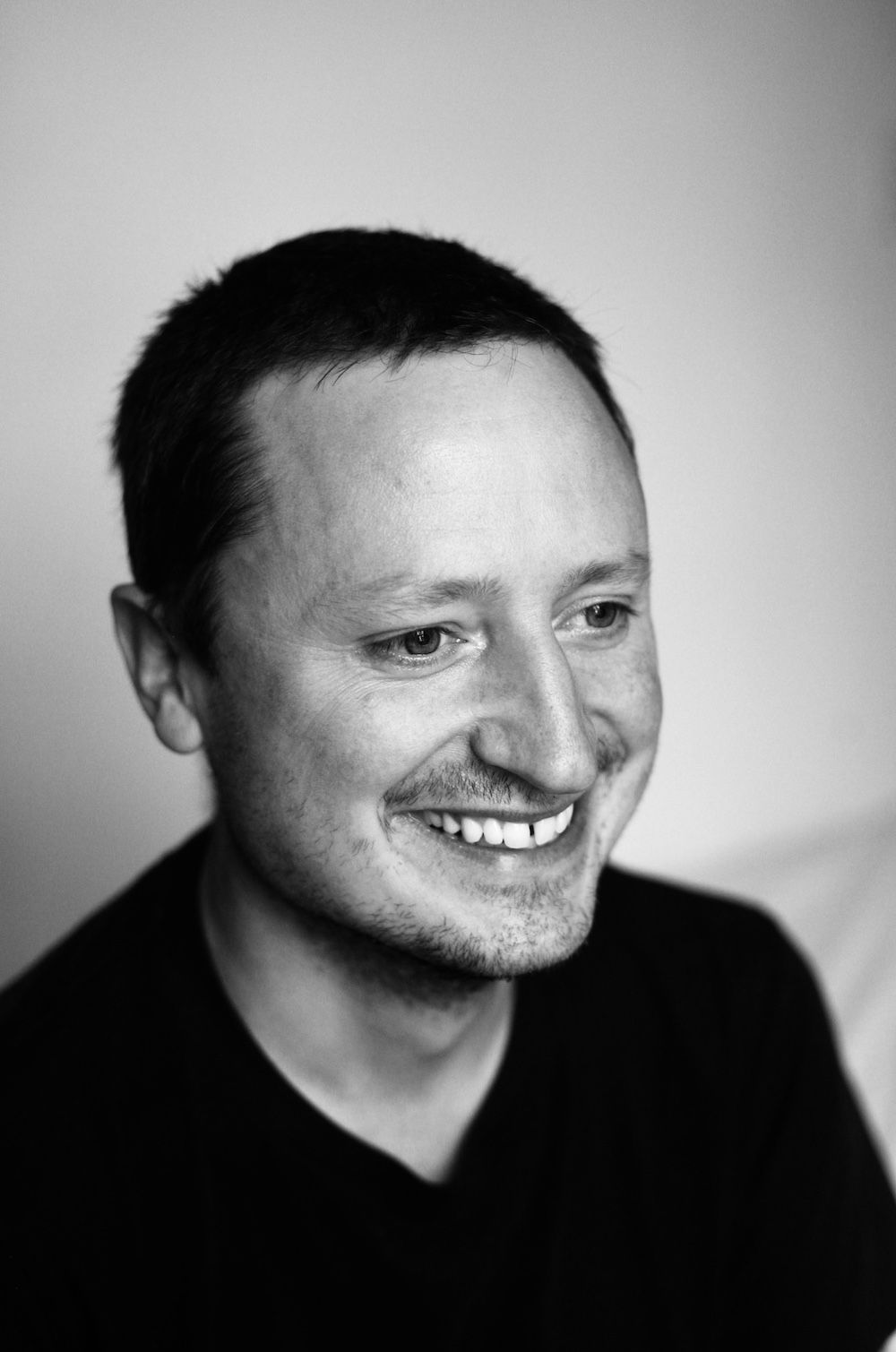An Interview with Tito Ferradans
Tito Ferradans runs the Anamorphic on a Budget YouTube channel.

Tito Ferradans runs the Anamorphic on a Budget YouTube channel.
Who are you, and what do you do?
My name is Tito Ferradans. Born in Brazil, I live in Canada and I do a multitude of things.
I'm a college professor, a motion graphics artist, a cinematographer, but the most likely way you've heard of me is because of my YouTube channel "Anamorphic on a Budget", where I talk almost exclusively about anamorphic lenses. I discuss how they work, their effects on the picture, the effects on the audience and how they changed cinema forever in the 1950's. Anamorphics created the widescreen format and allowed filmmakers to fill up giant screens in movie theaters which, in turn, filled the theater seats with audiences craving for immersion.
How did you get interested in that?
Until a couple years ago, "Anamorphic" and "Budget" were a paradox, putting those two words in the same sentence was like saying "dry water". Anamorphics have been historically expensive, with lenses that you literally can't buy (Panavision), to more affordable models that cost only thirty thousand dollars. So approaching the subject with the goal of spending under a thousand bucks was a big challenge.
The journey involved a lot of trial and error, and dealing with anamorphic adapters, which are not full lenses, but can be set up in such a way that you get most of the good things from anamorphic lenses, with the cost of dealing with lots of inconveniences. What got me hooked was how special the images came out when using these strange adapters at the time. The year was 2012 and digital video was starting to pick up in the low-budget market with many Canon cameras making that transition (5D and 7D were the key models). The main issue is everyone was using absolutely the same gear, so the results came out looking all sort of similar, even though the stories being told were completely different. I wanted something to make the look stick out among the crowd and anamorphics were my ticket.
In my last year of film school I made my graduation project to shoot a short film using affordable setups and write about the production process: what limitations the gear brought about, how that influenced my visual choices, the amount of experimentation needed before going into filming, and everything in between those steps. From there, the last ten years were a whirlwind and I never really stopped researching and writing/talking about the subject.
What resources could you suggest to people who want to learn how to do what you do?
The best resources are, honestly, my channel (www.youtube.com/anamorphiconabudget). A good starting point is the "Anamorphic Shooting 101" series, followed by the "Anamorphic Cookbook" modules. The Facebook group "Anamorphic Shooters" is a lively community where you can get lots of questions answered, buy and sell gear, as well as share your progress and gather feedback.
While there's still a mythology around anamorphic lenses, very few people have gone as deep as I have in making free and consistent content online about them.
What software, hardware, and other gear do you use on a regular basis?
Ooof, filming with anamorphic lenses requires a fair amount of stuff. I use a pair of Panasonic cameras (S1H and GH6), plus cages from SmallRig to make the rigging process easier. Rigging means attaching all required accessories to make the camera a better tool. This can go from mounting it on a tripod and adding rods underneath the camera to help support the weight of the lenses, to wireless video transmitters, microphones, follow focus, external batteries, external recording space, and so on. The possibilities are endless.
I also, obviously, use various anamorphic lenses and camera lenses almost daily while filming episodes for the channel.
On the software side, after a lifetime of using Adobe Premiere Pro for editing, I have switched over to DaVinci Resolve for a faster and lighter workflow. I'm also well versed in Adobe After Effects which helps me add a touch of visual pizzazz to clips whenever needed!
What routines & habits help you get your work done?
To be honest, there isn't much besides internal motivation. My schedule is a mess and I have no clue of what's happening in three weeks from the current date. Because of the multitude of jobs I have, I'm always assessing what needs the most attention at any given point and shuffling my time around that activity.
If an episode for the channel needs to be done urgently, I'll put other work on the back burner, but if some motion graphics delivery is due, that'll override the rest.
The one constant through this chaos is I need long intervals of uninterrupted focus to get into the flow and make good progress. I'd rather not start working on something unless I know I can put in three or four hours without interruptions into it.
What is it about anamorphic lenses that interests you?
Originally, it was the fact that they seemed impossible to have on a small budget project! I set out with the sole goal of proving common-sense wrong. It helped my journey that these lenses have been used to make some of the biggest classics Hollywood has ever put out, at a time when films had a very direct impact on society.
At this point of my journey, I'm very eager to see how far we're gonna get in the budget-friendly options. I wanna see how close the look coming out of a thousand-dollar lens can rival with one that costs 35 thousand dollars. In the meantime I hope to influence manufacturers in the journey to close that gap, and learn more for myself. To get better at telling stories visually and creating meaning behind pretty visuals.
Photography and filmmaking are easily accessible now thanks to phones. When do you think is the right time for someone to transition from using a phone to more specialized equipment? Or is there even a need to?
I'd say the only reason for transitioning is if you're considering it as a source of income. Phones are great, and fun, but they still don't offer the level of control that you can achieve with a camera and lens combination - tools built exclusively for the purpose of capturing images.
If you're experimenting with filmmaking, your phone is an excellent resource. If you keep growing your skills, you might reach a point where you feel the phone can't deliver what you intend to film. That's also a time when the switch might be a necessity. I avoid looking down on phone-filmmaking as inferior, first of all because it isn't inferior, because we have seen an immense amount of improvement on what computational photography can do to improve your phone's images, alongside the addition of more cameras for different perspectives!
What are some movies or scenes that do anamorphic shots particularly well?
Historically speaking, the anamorphic format has worked very well for epic stories that aim to immerse viewers - in the early days that meant "The Robe", "Ben Hur" and lots of westerns. In the 1970's and 80's we saw lots of sci-fi classics filmed with anamorphic lenses ("Star Wars", "Star Trek", "Alien", "Blade Runner"), and after that the visuals kind of got diffused to every genre according to director and cinematographer's preferences. Some of the anamorphic look, like the oval out of focus highlights give images a painterly quality that creates a different texture for backgrounds in close up shots.
It is still common to see anamorphics being picked for many epics these days - most of the Marvel Cinematic Universe was filmed in anamorphic. With the emergence of budget-friendly options, many indie and smaller productions are also venturing into that universe and learning about its effects on the audience and films.
What are some improvements you'd like to see lens manufacturers make?
We're at a pretty good point right now, with increasing options in the market and dropping prices. My request is more focused on the low-budget lens manufacturers, which seem to understand the potential for money making in the products, but that put in what feels like little research on what the filmmakers want. The community that exists around anamorphic lenses has very clear wants and needs, developed over years of experimentation with gear that was less than ideal when compared to a full fledged lens. So we know what corners can be cut, what boosts the look and what's a really bad idea. I wish more manufacturers tapped into this source of knowledge provided by the community.
Marketing is probably one of the hardest things for creators. How do you get the word out about your work?
This one gets an unexpected answer like the question about routines and habits. I barely try to get word out, and that's one of the shortcomings of my work. I only reach out to larger portals when I know I'm sitting on content that's incredibly original and relevant at the time. This way I've gotten articles and videos at PetaPixel, NoFilmSchool and CineD, which are big websites for filmmaking and photography, but I wish people found the material more organically. I know there's more I could be doing, I just don't have the time and the drive for it, and I'm okay with it.
The other way people find the channel is by simply looking up "Anamorphic lens" on youtube or google. Due to the amount of material I have on the subject, I'm usually one of the first results, and that helps with growth. I'm seeing a trend where every year the channel doubles in size. It was very slow at first, but it's picking up a nice speed.
How do you relax or take a break?
I've burned out at least half a dozen times because of trying to make the channel my main source of work, or income. So at one point I've reached the conclusion that I make the videos because I like it, and not because of some internal/external pressure or need. So whenever I'm feeling overwhelmed, or too tired, I take a break.
I read a lot - fiction and non-fiction; I take long rides on my bicycle; and last year I also picked up a motorcycle, which is great for unwinding the stress and pressure of work expectations.
Very early in the relationship with my partner she called me out on being a workaholic - everything I did had some work built into it - and from then on I started to dismantle that mindset of "living to work". Now I really enjoy doing things that are not work-related and have a clear distinction of what's work time and what's play time. It really helps with my mental health.
Whose work inspires or motivates you, or that you admire?
I'm very interested in the technical aspects of what I do, so most of my idols are people that discuss numbers and details that go over most people's heads. Some of them are Illya Friedman from Hot Rod Cameras and Roger Cicala who writes for the Lensrentals blog. Jay Holben is also on this list with the recently published bible "Cine Lens Manual" in partnership with Chris Probst ASC. The way these folks manage to translate very complex ideas and information in easy (or almost easy) to understand words is something that greatly inspires me on my own journey to make information more accessible.
Anything else you'd like to add?
Uhhhh, we were talking about how bad I do promotion for the channel, so, go check it out and subscribe! www.youtube.com/anamorphiconabudget
Also, a lot of folks that start into anamorphics wanna get it right from the very start. It's impossible. It's like wanting to get the best brushes and paints before you even get started into painting. Your style and preferences come with experience, so just jump in. Pick something that captures your interest and you'll grow from there.




